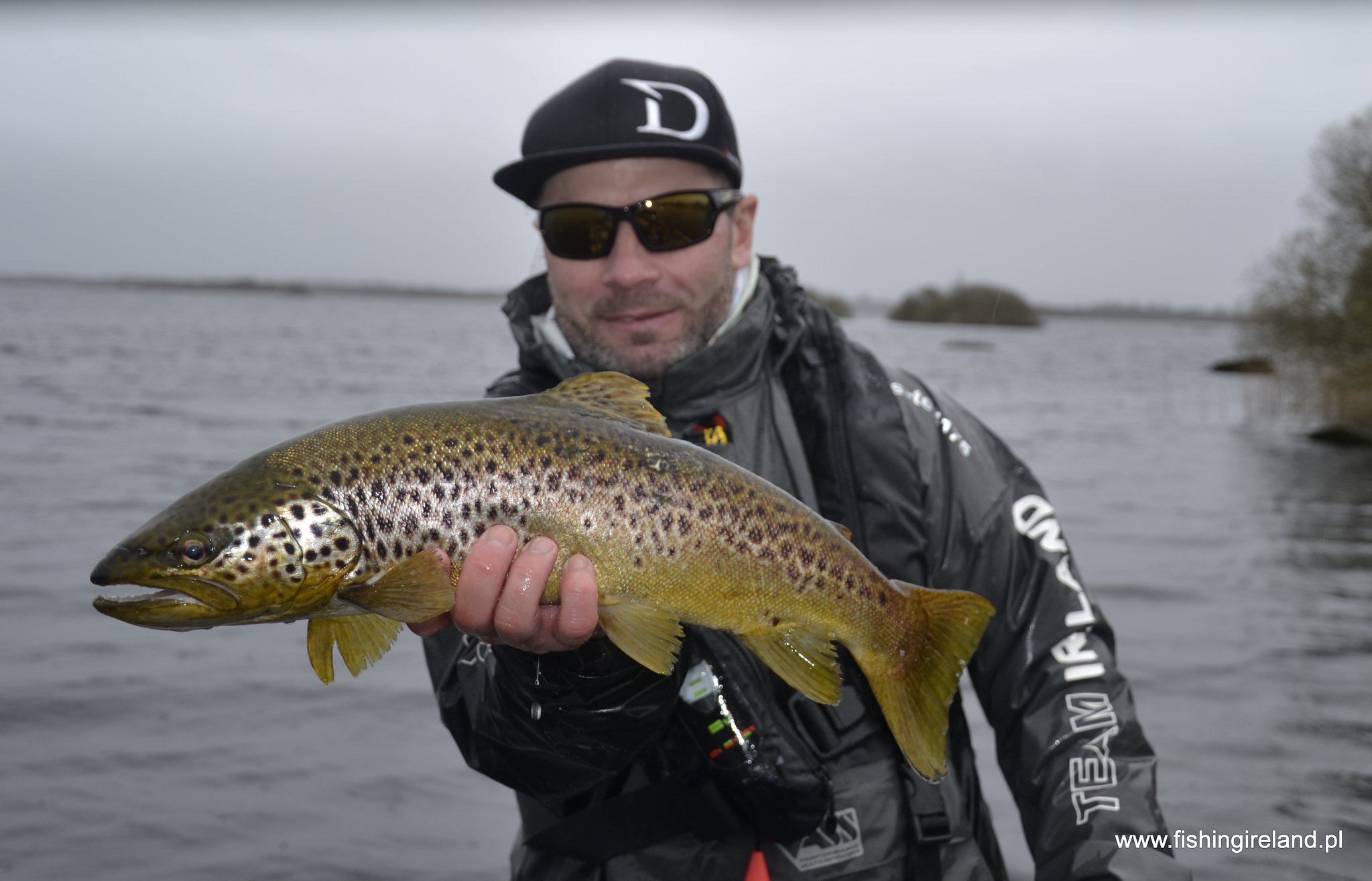Spinning fishing for trout in Irish loughs
|
Several years ago, when I came to Ireland, it was supposed to be just a fishing trip. The plan was to spend four weeks here fishing. At that time, I found a dead trout of about 80cm, on the lake shore! It was a shock for me, because in Poland these fish are usually not bigger than 60cm! Fish over 70 cm are caught very occasionally. Then, seeing this monstrously large trout, I decided that I would not return home until I caught such a fish! Until today, I have caught a lot of even larger fish than that found on the shore years ago, however at the time, the fishing possibilities of this island charmed me in such a way that I had to stay here permanently! Today, every year, I look forward to catching trout in the spring. At this time, I do not fish for pike, although they can be caught here all year round. There are two reasons for this. The first is not to bother them before and while spawning. The second - spring is by far the best time of the year for trout fishing! Later in the year, it will not be so good for the angler who likes to catch them with artificial lures. |
 |
 |
LIGHT TROLLING
Today, little information about the second of my favourite methods for trout. It's all about light trolling, of course! I learned this method on Lake Corrib. At the beginning, like all local anglers, I used Rapala lures and quite long rods. Trolling speed is about 4-5 km/h, and it is fishing mostly in bays and deeper edges. Back then, I used two rods. One closer to the boat with a wobbler that dived to about 3 m and the other one with a wobbler that was working about 0.5m below the surface. I've been catching a lot of fish. Sometimes I was even catching fish around 70cm. However, I felt that it could be further improved. In Poland, I produced trout wobblers which I fished in rivers. These models were ok, but not perfect for still water. The idea was born to create something typical for trout from the lake. Something that will be perfect for trolling but also good for spinning. This is how five models of my wobblers were created, which today are very well known in Ireland and beyond. All these lures are twitch baits.
|
|
TWITCH What is the twitch method? It is quite an aggressive presentation of the lure. It works fantastically for trout, which are a very aggressive predator. Generally, it consists of a few jerks, then leaving the bait for 2-3 seconds motionless. Then the lure, depending on the model, starts to sink, float upwards or, in the case of suspending models, stay in the place where it was stopped. All sinking versions are good. Which is the best? It all depends on fish activity, weather, water temperature, etc. Suitable models can be found: HERE
|
 |
 |
 |
|
TWITCH TROLLING When I first used this method on Lough Corrib I thought I was dreaming! That day I caught 17 fish in the 50-65cm range! Additionally, a few other fishermen who have fished in this location have only caught a single fish! The difference was in the right lures and their action in the water. I was moving at a speed of 3 km / h, and I was jerking my lure, and then, while putting the rod backwards, I stopped it in place for 1-2 seconds. Then jerks again and so on. All attacks are at the point where the bait comes to a stop and are super strong! As you can imagine, the fishing rod cannot be in the holder. You have to hold it in your hand all the time! It is not as convenient as traditional trolling, but in my opinion a lot more effective! |
 |
 |
FISHING EQUIPMENT
You need to purchase the appropriate equipment for this method! It is impossible to do it correctly with a fishing rod which I often see on local fishermen's boats. A suitable rod is a fast and stiff blank that has a deep bend under a fighting fish. The maximum length of the rod is 240cm, but I also use 200cm models. As a general rule, the higher the speed of the boat, the easier it is to pause with a longer rod. However, everything longer than 240 cm is just less comfortable to use. Casting weight around 25g. The lures weigh much less, but when trolling we have a long section of the line (braided line) in the water, which creates a lot of resistance. Only a stronger rod will allow the lure to work properly. Size 2000-2500 reel with 0.08 - 0.10mm braid, will be the best match. The colour of the braid is irrelevant in this method because a meter length of fluorocarbon has to be tied at the end. At the very end, a good, strong and small snap link. This is an element that many anglers forget about. Some people use a snap that is too strong, large and too heavy, which makes the lure less effective, while others use too weak models that very strong Irish trout can open during a fight and disappear with our lure in the depths of the lake ... That's all for today. In a week I will write what the beginning of the season went for me and I will add another bit of information about the colours of the wobblers, which is extremely important, and it will be a great surprise for most of you! Until next time! Jacek Gorny |
